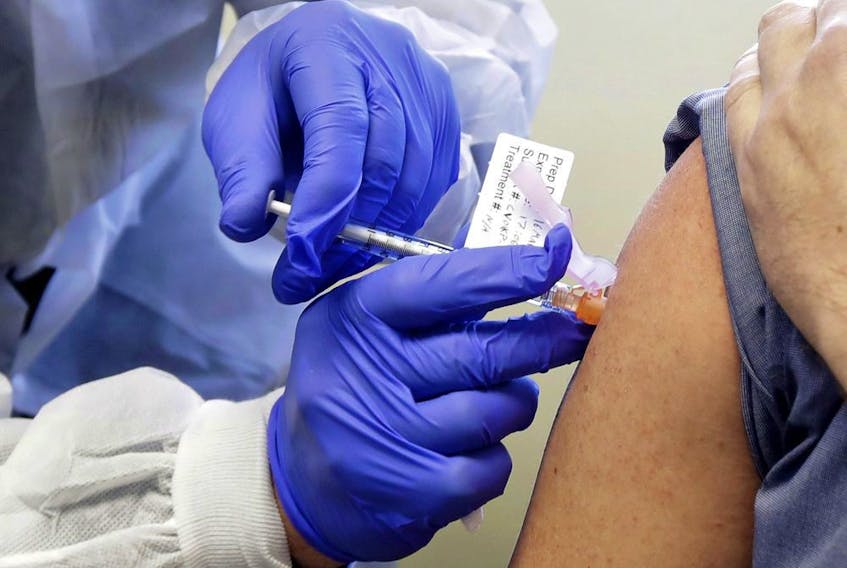The recent good news about vaccine candidates produced by Pfizer and Moderna is actually better than you think. These vaccines use witchy technology to insert programmed messenger RNA (mRNA), the substance that lets DNA create proteins, into the body’s cells to generate immune responses. This is an idea that has been around for something like 30 years. Scientists discovered quite early on in the era of genomics that direct mRNA insertion — just whipping up a batch of it, coded to produce the reaction you want, and jabbing it into an experimental rodent — could work as a vaccination method, and for other things.
In retrospect, the history since the principle was established seems like one of military-style preparation for the onslaught we are now facing. There was, until this month, no mRNA vaccine approved for use in humans. mRNA is fragile, which is why the temperatures involved in storage and transport can be a problem, so a means of holding the mRNA strand together long enough for it to have biological activity had to be devised.
This involves embedding the mRNA molecules in nanoparticles of lipids — basically sub-microscopic balls of wax designed to “melt” away at the right moment, revealing the single-stranded RNA secreted within. The little balls are a manufacturing challenge almost as complex as devising the right mRNA code itself — and this, in turn, involves using “modified” nucleosides in the molecule, replacing letters in the G-T-C-A code used by nature with slightly weirder versions. If Moderna’s vaccine turns out to be a little bit better than Pfizer’s, or more practical for fast global distribution, it’s probably because Moderna (see the “mRNA” in there?) was founded to solve these challenges and has been at the forefront of the attack ever since. In reading about mRNA vaccines, I happened upon a rundown of the topic written in March 2019. It is scathingly technical, but what leapt out at me was the prediction that although mRNA vaccines were still untested, the authors were confident that “mRNA-based vaccines can fill the gap between emerging pandemic infectious disease and a bountiful supply of effective vaccines.” They didn’t say “might fill the gap”; they said “can.” I wonder if there was an argument about that. Maybe they feel bad about not having written “these vaccines will fill the gap, and much sooner than you think, bud.”
There was, until this month, no mRNA vaccine approved for use in humans
We are all having a good-natured laugh right now at other scientists who predicted that vaccine development had to take years, instead of six months or so, to get to the stage of mass human trials. Pfizer and Moderna completed early safety studies on small groups of dozens of volunteers in the summer, and these results showed that the vaccines seemed to be inducing what looked like, as far as anyone can tell, the right immune responses.
Now the rubber is really hitting the road, and we’re getting controlled studies involving thousands of people, half given the vaccine and half given placebo. In Moderna’s study, some 30,000 people were included in the trial: 95 in the placebo group got COVID-19, 11 of them “severely,” while in the treatment group the figures were five and zero. And no one seems to have suffered major adverse consequences from unpredictable side-effects of the witch’s brew. (Oh no, eye of newt causes liver cancer!)
Before the pandemic, not every geneticist was totally comfortable with trying mRNA therapy on humans. The novel coronavirus has given the research establishment licence to perform what might be thought of as a meta-experiment. I don’t want to frighten readers who are already paranoid about vaccines, but this is not just an emergency test on humans of a new therapy, but of an entire platform for disease treatment.
Follow-up on the early recipients of mRNA vaccine will be prolonged. But the whole point of mRNA vaccination is that it causes the body to imitate the immune response to the virus, without actually using a virus, and at the chemical level there is nothing nasty or threatening in the vaccines.
The big questions are whether the mRNA-induced immunity lasts long enough to be useful, and whether it might create some sort of drug-tolerance-like effect that ends up being counterproductive (which is not impossible even now). But if everything works out, there could be huge benefits in the treatment of other infectious diseases over the next decade or two.
As you may have read on social media, the people we have to thank for this include Dolly Parton. In April, after a conversation with a researcher friend at Vanderbilt University in Nashville, she donated a million dollars to the school for COVID-19 research. That money — admittedly a modest island in a billion-dollar stream of emergency capital — was used to help fund the independent testing of the Moderna vaccine.
Ms. Parton, of course, already had a place in the history of genetics. The first cloned mammal, Dolly the sheep, had been named after her in 1996. This was done in the spirit of a crude joke; the donor cells used in the cloning had come from mammary glands, so the snickering Scotsmen who did the research chose to commemorate what must still be the world’s most famous bosom.
Lord knows no one has made as many boob jokes over the years as Dolly herself, and her being a songwriter and media magnate with a nine-figure fortune never discouraged anyone else from making them. Now she might have played a direct personal role in saving uncountable thousands of lives — and advancing the same field of research, on a frontier barely conceived in the ’90s, that produced sheep-Dolly. The universe does sometimes seem to enjoy its little jokes.
Copyright Postmedia Network Inc., 2020









